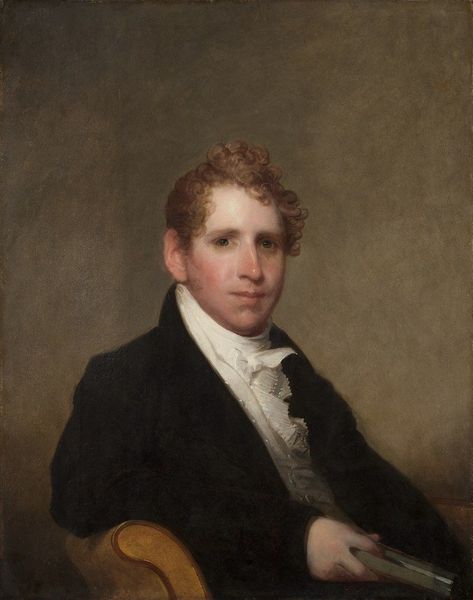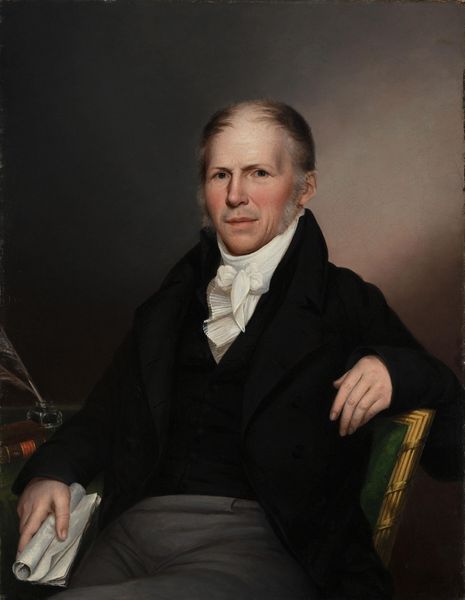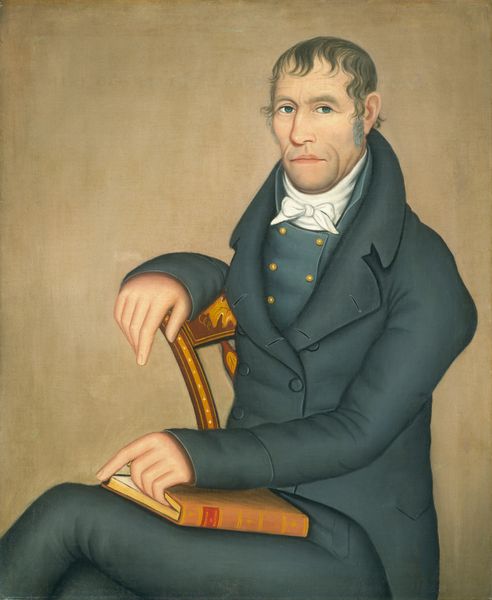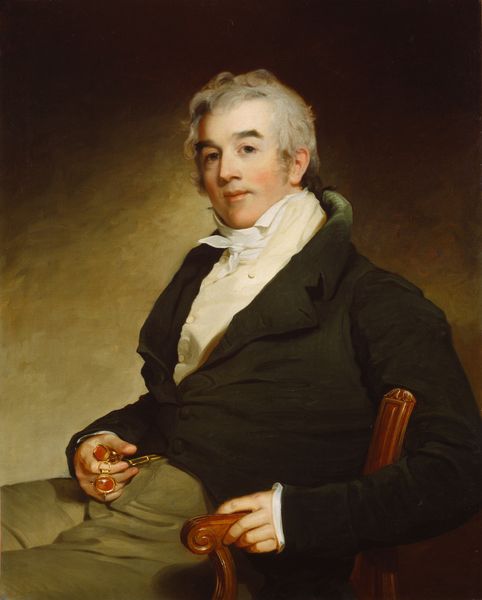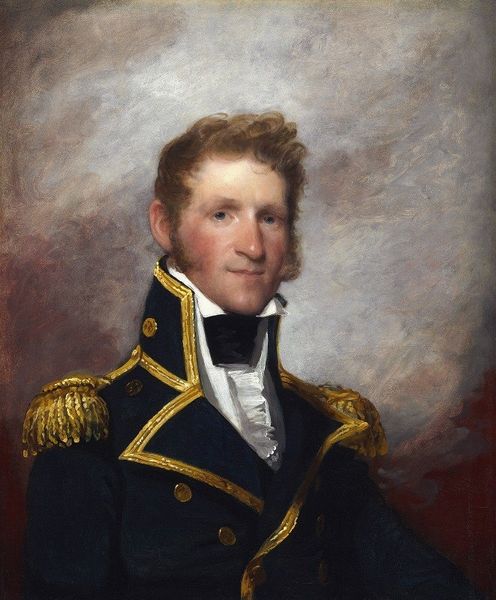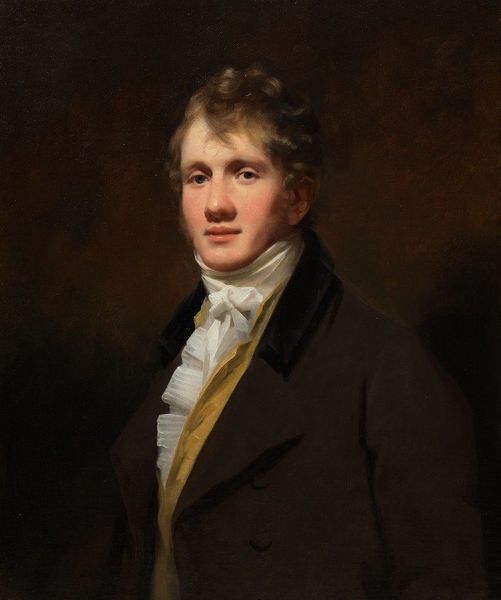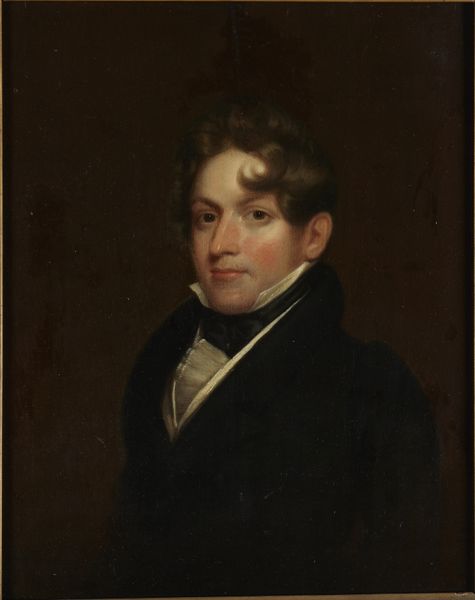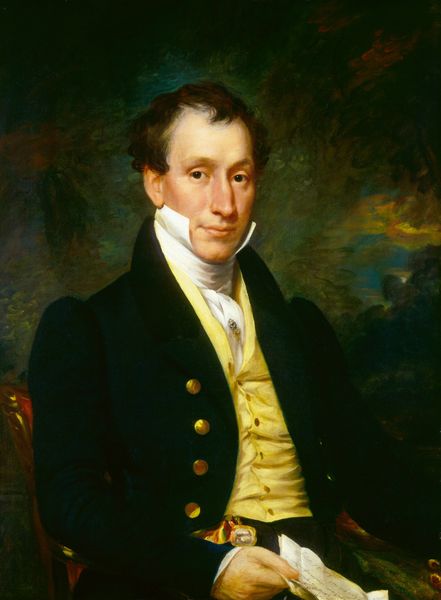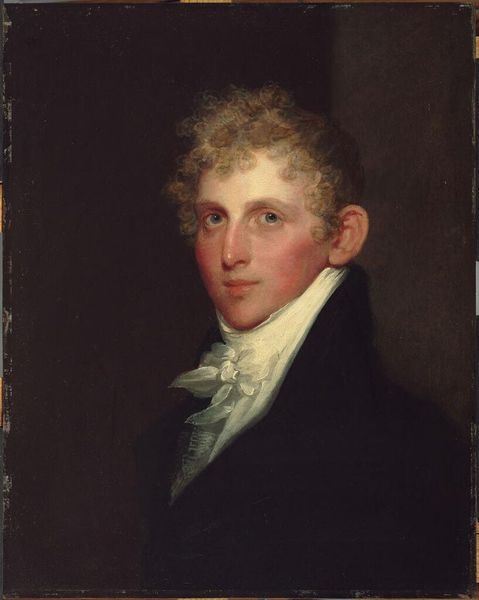
painting, oil-paint
#
portrait
#
neoclacissism
#
painting
#
oil-paint
#
academic-art
#
realism
Dimensions: overall: 91.76 × 71.44 cm (36 1/8 × 28 1/8 in.) framed: 119.86 × 99.54 × 13.97 cm (47 3/16 × 39 3/16 × 5 1/2 in.)
Copyright: National Gallery of Art: CC0 1.0
Charles Bird King’s portrait of Henry Clay is an oil painting on canvas, a material and technique deeply embedded in the history of Western art. King built up layers of thin paint to create smooth transitions of tone, modeling Clay’s face and clothing. Notice how the texture of the canvas is almost invisible; King has diligently applied his craft to create an illusion of reality. The labor involved is considerable, with each brushstroke contributing to the overall effect. It’s a far cry from the mass-produced images we see today. But let’s also consider the social context. Oil painting at this time was a signifier of status, a way for the wealthy and powerful to immortalize themselves. The finished painting would have been displayed in a private home, accessible only to a select few. King himself came from humble beginnings, he understood how the trappings of high culture could legitimize someone like Clay. The painting therefore speaks to a specific moment in American history, where art, labor, and social class were intimately intertwined.
Comments
No comments
Be the first to comment and join the conversation on the ultimate creative platform.


